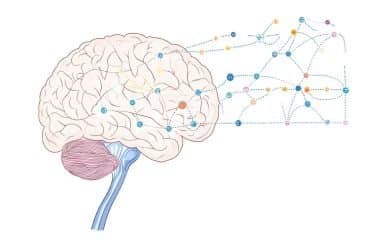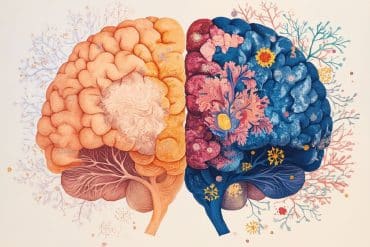Summary: A new study suggests regular physical activity may lead to greater hippocampal volume and could stave off dementia, especially in older people.
Source: UCLA.
Using the landmark Framingham Heart Study to assess how physical activity affects the size of the brain and one’s risk for developing dementia, UCLA researchers found an association between low physical activity and a higher risk for dementia in older individuals. This suggests that regular physical activity for older adults could lead to higher brain volumes and a reduced risk for developing dementia.
The researchers found that physical activity particularly affected the size of the hippocampus, which is the part of the brain controlling short-term memory. Also, the protective effect of regular physical activity against dementia was strongest in people age 75 and older.
BACKGROUND
Though some previous studies have found an inverse relationship between levels of physical activity and cognitive decline, dementia and Alzheimer’s disease, others have failed to find such an association. The Framingham study was begun in 1948 primarily as a way to trace factors and characteristics leading to cardiovascular disease, but also examining dementia and other physiological conditions. For this study, the UCLA researchers followed an older, community-based cohort from the Framingham study for more than a decade to examine the association between physical activity and the risk for incident dementia and subclinical brain MRI markers of dementia.

METHOD
The researchers assessed the physical activity indices for both the original Framingham cohort and their offspring who were age 60 and older. They examined the association between physical activity and risk of any form of dementia (regardless of the cause) and Alzheimer’s disease for 3,700 participants from both cohorts who were cognitively intact. They also examined the association between physical activity and brain MRI in about 2,000 participants from the offspring cohort.
IMPACT
What this all means: one is never too old to exercise for brain health and to stave off the risk for developing dementia.
Funding: The research was supported by a National Institutes of Health/National Heart, Lung, and Blood Institute contract (HHSN268201500001I, N01-HC-25195, N01HV28178, R01HL093029, R01 HL131029 U01 HL096917, and 2K24HL04334) and training grant (T32-HL07224), the National Institute on Aging (R01 AG016495, AG008122, AG031287, AG047645), the National Institute of Neurological Disorders and Stroke (R01 NS017950), and the American Heart Association (11CRP4930020 and 16MCPRP30310001).
Source: Enrique Rivero – UCLA
Image Source: This NeuroscienceNews.com image is for illustrative purposes only.
Original Research: Abstract for “Physical Activity, Brain Volume, and Dementia Risk: The Framingham Study” by Zaldy S. Tan, Nicole L. Spartano, Alexa S. Beiser, Charles DeCarli, Sanford H. Auerbach, Ramachandran S. Vasan, and Sudha Seshadri in Journals of Gerontology Series A Biological Sciences and Medical Sciences. Published online July 15 2016 doi:10.1093/gerona/glw130
[cbtabs][cbtab title=”MLA”]UCLA. “Exercise Results in Larger Brain Size and Lowered Dementia Risk.” NeuroscienceNews. NeuroscienceNews, 2 August 2016.
<https://neurosciencenews.com/exercise-dementia-brain-size-4767/>.[/cbtab][cbtab title=”APA”]UCLA. (2016, August 2). Exercise Results in Larger Brain Size and Lowered Dementia Risk. NeuroscienceNews. Retrieved August 2, 2016 from https://neurosciencenews.com/exercise-dementia-brain-size-4767/[/cbtab][cbtab title=”Chicago”]UCLA. “Exercise Results in Larger Brain Size and Lowered Dementia Risk.” https://neurosciencenews.com/exercise-dementia-brain-size-4767/ (accessed August 2, 2016).[/cbtab][/cbtabs]
Abstract
Physical Activity, Brain Volume, and Dementia Risk: The Framingham Study
Background: Several longitudinal studies found an inverse relationship between levels of physical activity and cognitive decline, dementia, and/or Alzheimer’s disease (AD), but results have been inconsistent. We followed an older, community-based cohort for over a decade to examine the association of physical activity with the risk of incident dementia and subclinical brain MRI markers of dementia.
Methods: The physical activity index (PAI) was assessed in the Framingham Study Original and Offspring cohorts, aged 60 years or older. We examined the association between PAI and risk of incident all-cause dementia and AD in participants of both cohorts who were cognitively intact and had available PAI (n = 3,714; 54% women; mean age = 70±7 years). We additionally examined the association between PAI and brain MRI in the Offspring cohort (n = 1,987).
Results: Over a decade of follow-up, 236 participants developed dementia (188 AD). Participants in the lowest quintile of PAI had an increased risk of incident dementia compared with those in higher quintiles (hazard ratio [HR] = 1.50, 95% confidence interval [CI] = 1.04–1.97, p = .028) in a multivariable-adjusted model. Secondary analysis revealed that this relation was limited to participants who were apolipoprotein (APO)E ε4 allele noncarriers (HR = 1.58, 95% CI = 1.08–2.32; p = .018) and strongest in participants aged 75 years or older. PAI was also linearly related to total brain and hippocampal volumes (β ± SE = 0.24±0.06; p < .01 and 0.004±0.001; p = .003, respectively).
Conclusion: Low physical activity is associated with a higher risk for dementia in older individuals, suggesting that a reduced risk of dementia and higher brain volumes may be additional health benefits of maintaining physical activity into old age.
“Physical Activity, Brain Volume, and Dementia Risk: The Framingham Study” by Zaldy S. Tan, Nicole L. Spartano, Alexa S. Beiser, Charles DeCarli, Sanford H. Auerbach, Ramachandran S. Vasan, and Sudha Seshadri in Journals of Gerontology Series A Biological Sciences and Medical Sciences. Published online July 15 2016 doi:10.1093/gerona/glw130






